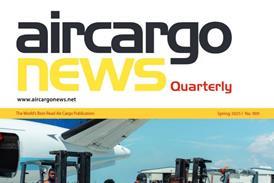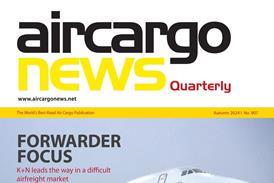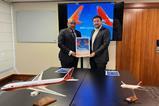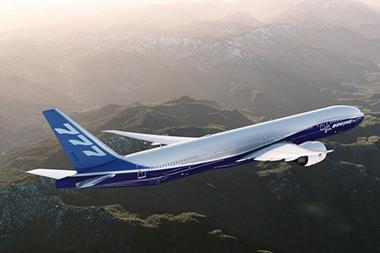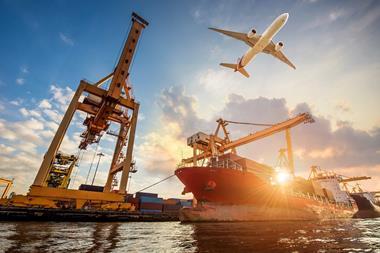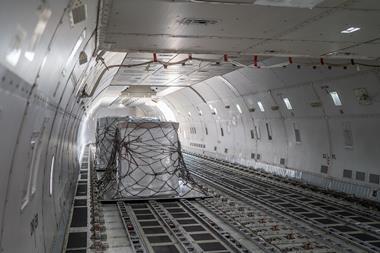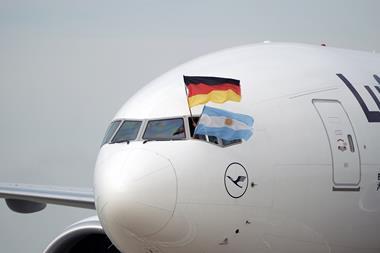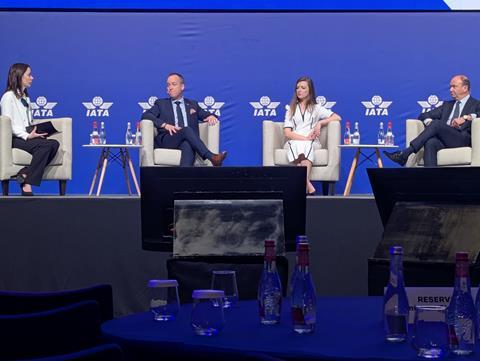
It’s not yet clear what impact US tariffs may have on freighter aircraft manufacturing at a time when there are delays affecting the modernisation of an ageing freighter fleet.
Commenting on how the implementation of US tariffs and retaliatory tariffs by other countries, many of which relate to raw materials used for production, may affect freighter production, IATA director general Willie Walsh said it was too early to make a judgement on the impact.
“Nobody can say with any certainty at this stage just quite what the impact will be,” he said during a press conference at IATA World Cargo Symposium (WCS).
“It’s just one of those additional uncertainties that we’re trying to come to terms with.”
However, he added that historically freighter production has been afforded a degree of protection. That said, if tariffs do impact the industry there will be a ripple effect because aircraft manufacturing relies on a global supply chain.
“Traditionally, freighter manufacturing has sat outside of the tariff environment because of agreements between the US and Europe principally but we will wait and see,” said Walsh.
“I think everybody’s trying to understand what the impact would be. And it will impact on everybody because aircraft manufacturing (involves) the global integrated supply chain. It’s not just one single country (that is involved).”
He pointed out: “Even if it’s Boeing aircraft, a lot of the parts are manufactured outside of the US. Same with Airbus.”
Aviation consultancy firm Cirium previously said demand for freighters is expected to continue despite the US introduction of new tariffs on China.
But delivery of new aircraft has been a slow process. In October, Boeing said it would delay the entry to market of the 777-8 freighter until 2028.
And in February, Airbus announced it would push back the entry-into-service date of its A350 freighter to the second half of 2027, from its earlier expectation of 2026.
Speaking about the knock-on effect of the ageing fleet on the air cargo industry’s decarbonisation efforts, Walsh said: “We’re disappointed with the progress being made by aircraft manufacturers.
“The average age of the fleet today is the highest it’s ever been. It’s about 1.2 or 3 years higher than the long-term average.
That means we’re operating less fuel efficient aircraft. So we need to get the aircraft that have been ordered, delivered. That will take some time.”
Misaligned capacity
Alongside tensions over the potential for tariffs to weigh heavily on fleet renewal, ageing fleets are causing capacity issues.
This is according to panellists during the ‘Air Cargo Market Factors’ session.
Speaking about operational challenges in the industry, Marco Bloeman, managing director of Aevean, stressed limited belly capacity is affecting the ability of airlines to access the most suitable aircraft for long haul routes.
Bloeman said that there are instances of narrowbody capacity being deployed on long haul routes where widebody capacity would be more appropriate and efficient.
“There’s a lot of widebody belly capacity not being deployed on international markets. It’s being deployed domestically in China. We see the introduction of narrowbody passenger aircraft on for example the transatlantic. And that’s not helping the capacity profile overall.”
He added that 60% of capacity is currently on freighters as belly capacity continues to recover post-pandemic and as a result of the limited capacity “we need to deploy freighters to optimise networks and fly to the max”.
Another issue is imbalances in outbound-inbound capacity due to variations in market demand across the world.
Bloeman said said trade lane imbalances are increasing.
“The imbalances on trade lanes are increasing over time and that requires greater network planning. That also impacts yields exponentially.”
He said a consequence of these imbalances is that airlines sometimes only achieves revenue on one leg of a route, e.g. Asia-South America.
This can be exacerbated by a partnership on a certain route, but often the partnership is necessary regardless, he said.
Asia to Europe and transpacific, with high e-commerce volumes, are notable examples. “We have seen a lot more going out then going in.
“That imbalance increased last year - by 10% roughly last year on both lanes.”
“I don’t see that changing much. I think that’s going to further increase in years to come.
Matthieu Casey, managing director, commercial, Air Canada, added: “Even the Atlantic is imbalanced and always has been so will probably remain somewhat imbalanced.”
Bloeman further noted the Middle East and Asia are expected to see the most growth in capacity in the future.



